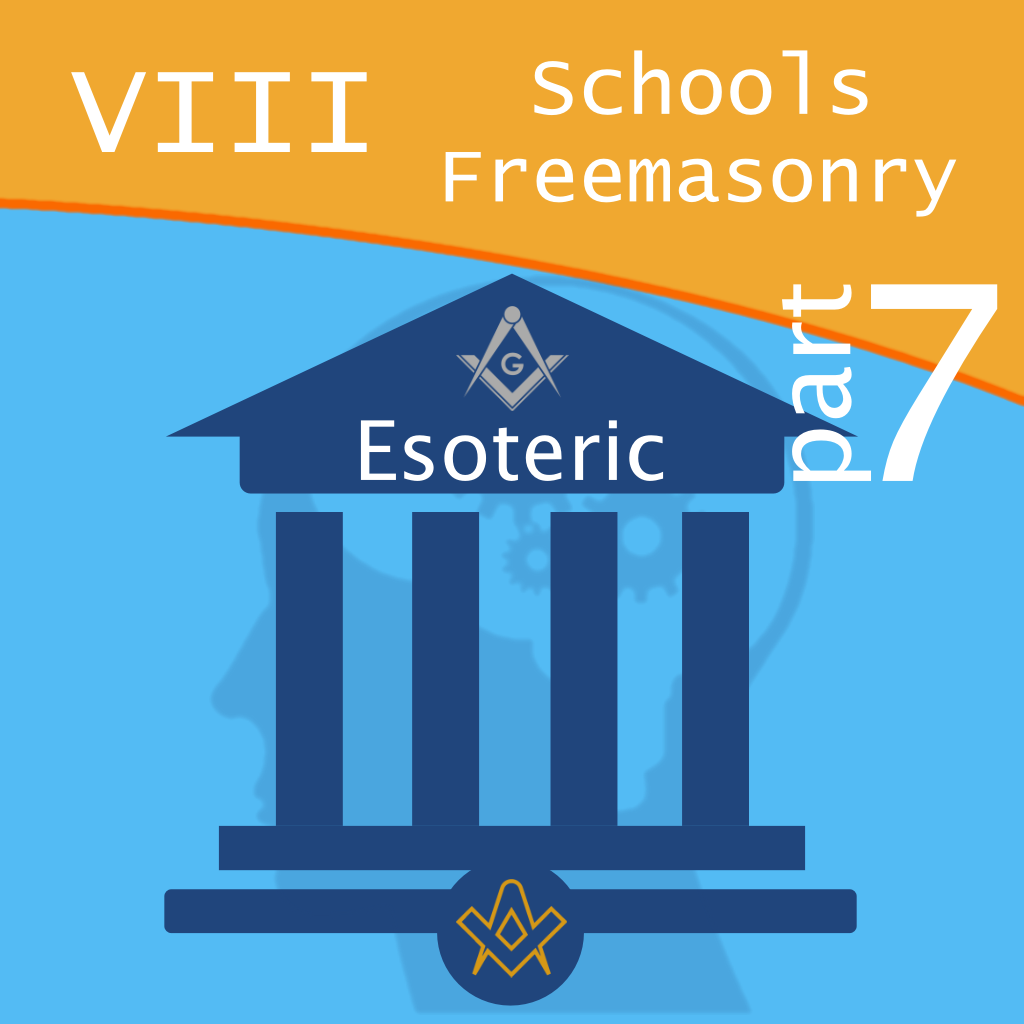The Esoteric School of Freemasonry relates to the premise by adherents that there are occult (meaning ‘hidden’) or ‘inner mysteries’ to Masonry.
This ideology was particularly prevalent in European Masonic circles during the 18th and 19th centuries during the so-called Age of Enlightenment.
Free thinkers and philosophers were inevitably drawn to the allegory and symbolism abundant in Freemasonry and it gave rise to all manner of interpretations, of which the esoteric was particularly appealing to many.
Renaissance magic and alchemy had been a major influence on ‘enlightened’ men (and women), and what is known as Western Esoterism or Western Mystery Tradition first began to emerge in the late 17th century.
In this we can find an overlap between the Esoteric and ‘Romantic’ Schools of Freemasonry, both of which yearn for some deeper meaning or tradition within the Craft.
Many of the most influential ‘movers and shakers’ within Continental Freemasonry were heavily influenced by the notion that there were links to arcane secrets hidden within Masonry that only a chosen few could understand.
Ancient Egypt was one of the main sources for inspiration, and various ‘Egyptian rituals’ sprang up within the fledgling Freemasonry of the mid-to late 18th century, most notably that of Count Alessandro Cagliostro.
His ‘Egyptian Rite of Freemasonry’ promised spiritual rejuvenation and immortality via an elaborate system, which he declared had been passed on to him by an Egyptian initiate.
Regardless of the fact that early travellers and writers had no idea what the ancient hieroglyphs meant, the rituals were based purely on a hybrid blend of Hermetic, alchemical, and Hebrew biblical symbolism, combined with a hefty dose of ‘intuition’.
The ancient Egyptians ‘secrets’ ostensibly died with their civilisation, and even though variations and supposed versions of their rituals and mysteries were believed to have been passed down to the Greeks and Romans, there is no real evidence to prove that these Greco-Roman and Mystery Schools were a true representation of the Egyptian religion; they may well have been interpretations of what the ancient Greeks and Romans superficially observed but a comparison of the Greco-Roman period of Egyptian temples with earlier ones, shows that there is an element of ‘monkey-see, monkey-do’ in the symbolism and it rarely has the same ‘flavour’ of the pure Egyptian dynasties.
The teachings of the mythical Egyptian sage Hermes Trismegistus also played a large part in the proliferation of ‘Hermetic’ and ‘alchemical’ Freemasonry.
The Hellenistic Hermes Trismegistus was syncretic blend of Djehuti/Thoth, the Egyptian god of wisdom, magic, writing and mathematics, and the Greek messenger god Hermes.
The Corpus Hermeticum, a body of ‘technical’ (astrology/alchemy/medicine/magic) and religio-philosophical works have since been dated most likely to around the 2nd/3rd century AD, pointing to the fact that they were not of ancient Egyptian origin and most likely a collection of hybridised teachings that had filtered into the public domain of the Hellenistic centre of learning in the city of Alexandria founded in c.331 BC by Alexander the Great.
By the 1st century AD, the city was a melting pot of Egyptians, Jews, Christians, and scholars, scientists and philosophers from across the Mediterranean world.
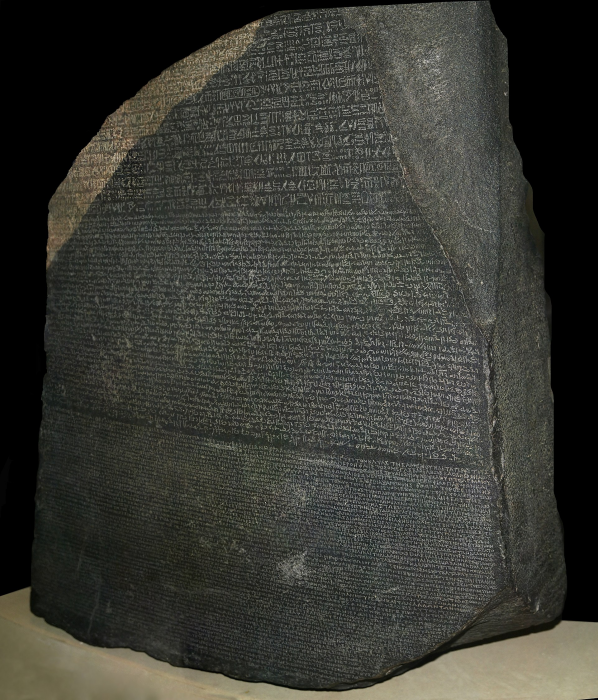
The Rosetta Stone © Hans Hillewaert
IMAGE LINKED: wikimedia Attribution 4.0 International (CC BY 4.0)
Hybridisation of all this wisdom makes for a difficult unravelling of Egyptian religious purity and when we add to this the fact that decipherment of the hieroglyphs was only achieved by Francois Champollion in the 1820s, we can almost certainly debunk any notion that the Renaissance or early Enlightenment scholars understood them.
We know all this now, but at the time the promise of ‘ancient secrets’ was a potent lure for seekers of enlightenment and immortality – and the ‘Egyptian’ Rites of Freemasonry promised just that!
The Esoteric School of Freemasonry continued to flourish throughout the 19th- and early 20th century, with the emergence of ‘occultism’ such as Theosophy, and Spiritualism via proponents such as Éliphas Lévi, Gérard Encausse (Papus), Helena Blavatsky, and later quasi-Masonic Orders such as the Hermetic Order of the Golden Dawn and in the early 20th century the Societas Rosicruciana in Anglia.
Arthur Edward Waite – proponent of the Esoteric School of Freemasonry
Few individuals exerted more influence in “esoteric Masonry” than did A.E. Waite. His hunger for the “hidden wisdom” of Masonry, as well as life, drove him to his studies of all matters esoteric.
Respected as a scholar, magician and Mason of quality, his words drew praise from many, yet were controversial enough to draw a fair amount of criticism … likely to Waite’s delight.
– Joseph Fort Newton (from the Foreword to Waite’s ‘Words from a Masonic Mystic’)
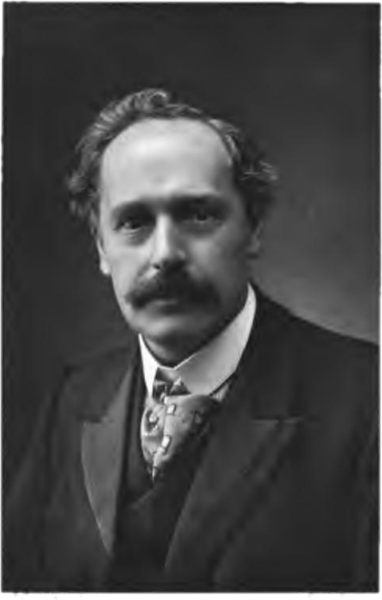
A.E. Waite
IMAGE LINKED: wikimedia Attribution 4.0 International (CC BY 4.0)
Arthur Edward Waite (1857 – 1942) was a British poet and scholarly mystic who wrote extensively on occult and esoteric matters, and was the co-creator of the Rider–Waite tarot deck.
R. A. Gilbert, an expert on esoterism, and Waite’s biographer wrote:
“Waite’s name has survived because he was the first to attempt a systematic study of the history of western occultism—viewed as a spiritual tradition rather than as aspects of proto-science or as the pathology of religion.”
Waite was born in Brooklyn, New York, United States. On the death of his father, the family returned to Waite’s mother’s home country of England, where he was then raised.
Waite was well-educated, but when his sister Frederika died in 1874 he became drawn to psychical research.
At the age of 21, he began to read regularly in the Library of the British Museum, studying many branches of esotericism.
In 1881 Waite discovered the writings of Eliphas Levi. He spent most of his life in or near London, connected to various publishing houses and editing a magazine, The Unknown World.
Waite soon entered in to a disjointed career in various esoteric groups, joining the Outer Order of the Hermetic Order of the Golden Dawn in January 1891, from which he soon withdrew in 1893, only to re-join in 1896.
He entered the Second Order in 1899. Waite became a Freemason in 1901, and entered the Societas Rosicruciana in Anglia in 1902.
He then founded the Independent and Rectified Order R. R. et A. C. in 1903, however, this was disbanded in 1914.
The Golden Dawn was torn by internal feuding until Waite’s departure in 1914; in July 1915 he formed the Fellowship of the Rosy Cross.
By that time there existed some half-dozen offshoots from the original Golden Dawn, and as a whole it never recovered.
Waite was interested in the higher grades of Freemasonry and saw initiation into Craft Masonry as a way to gain access to these rites.
After joining the Societas Rosicruciana in Anglia and the Knights Templar, Waite traveled to Switzerland in 1903 to receive the Regime Ecossais et Rectifie or the Rectified Scottish Rite and its grade of Chevalier Bienfaisant de la Cite Sainte (C.B.C.S.).
Waite believed that the Rectified Scottish Rite, more than any other Masonic Rite, represented the “Secret Tradition” of mystical spiritual illumination.
Waite was an author and many of his works were well received in the esoteric circles of his time, but his lack of academic training is visible in his limitations as a historian and in his belittling of other authors.
He wrote numerous texts on esoteric and Masonic subjects; he also translated and reissued several mystical works. However, it is his Rider–Waite tarot deck, first published in 1910, with illustrations by fellow Golden Dawn member Pamela Colman Smith that is probably his greatest legacy, having had a large influence on contemporary occult tarot.
Waite authored the deck’s companion volume, the Key to the Tarot, republished in 1911 as the Pictorial Key to the Tarot.
Source – Wikipedia
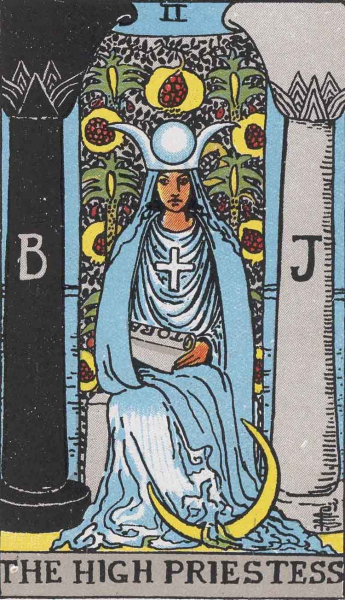
RWS Tarot 02 High Priestess
IMAGE LINKED: wikimedia Attribution 4.0 International (CC BY 4.0)
So, is Freemasonry esoteric, or not? –
8 Schools of Freemasonry – Historic P6. The Historic, or Authentic School of Freemasonry . A dedication to fact-based historical writings as opposed to the ‘traditional’ or ‘romantic’ history, led a group of prominent Freemasons to form what would become known as the ‘Authentic School’ of Freemasonry. [ The Square Magazine ]
Arturos de Hoyas, the esteemed historian and Masonic scholar, wrote a superb essay on the subject citing just that question – his conclusion:
The short answer is “Yes, no, maybe.”
Esotericism is any topic “intended for or likely to be understood by only a small number of people with a specialized knowledge or interest.” This certainly applies to Masonry.
But on a deeper level, and in a Masonic context, the word esoteric is usually taken to mean that our ceremonies and rituals allude to realities and/or truths not generally understood, or which may have a spiritual component to them.
The term is tainted to some people, and acceptable to others; hence, it may not be easy to wholly accept or discard the term “esoteric Masonry.”
Like an onion, each esoteric layer successively builds upon the other. We can all agree that Masonry is intended to be understood by few, and that it’s a kind of specialized knowledge.
But the questions are, “What kind of specialized knowledge?” and “Are they real secrets?”
Depending upon one’s inclinations, the Master Masons Degree has been interpreted in a variety of different ways by different persons.
For some, it’s a story of fidelity; for others, it teaches hope in the immortality of the soul; for still others, it’s a lesson in alchemy; and yet for still others, it alludes to the discovery of entheogens. Some see it as multi-faceted, or a combination of various things.
But, as I have written elsewhere, we should avoid trying to enshrine our preferred interpretations as the “true” one.
If esotericism interests you, that’s fine; if not, that’s also fine.
My personal library is well-stocked with enough material on both sides to make anyone think in favor of, or against, virtually any position.
The important thing is to be well-educated, and understand what we know first. Before you reach for the stars, make sure your feet are firmly planted on the ground.
Make yourself into someone who can be taken seriously. Learn the facts about our origins based upon what we know.
I sometimes speak about “historical records” versus “hysterical documents.” Before you buy into such fantasies as “Freemasonry descended from the ancient Egyptians,” get a quick education.
Further reading:
Arturo de Hoyas, 33°, Grand Cross | Grand Archivist & Grand Historian. ‘Is Freemasonry Esoteric?’ https://scottishrite.org/scottish-rite-myths-and-facts/is-freemasonry-esoteric/
Original article published in Scottish Rite Journal March/April 2017
Article by: Philippa Lee. Editor

Philippa Lee (writes as Philippa Faulks) is the author of eight books, an editor and researcher.
Philippa was initiated into the Honourable Fraternity of Ancient Freemasons (HFAF) in 2014.
Her specialism is ancient Egypt, Freemasonry, comparative religions and social history. She has several books in progress on the subject of ancient and modern Egypt. Selection of Books Online at Amazon

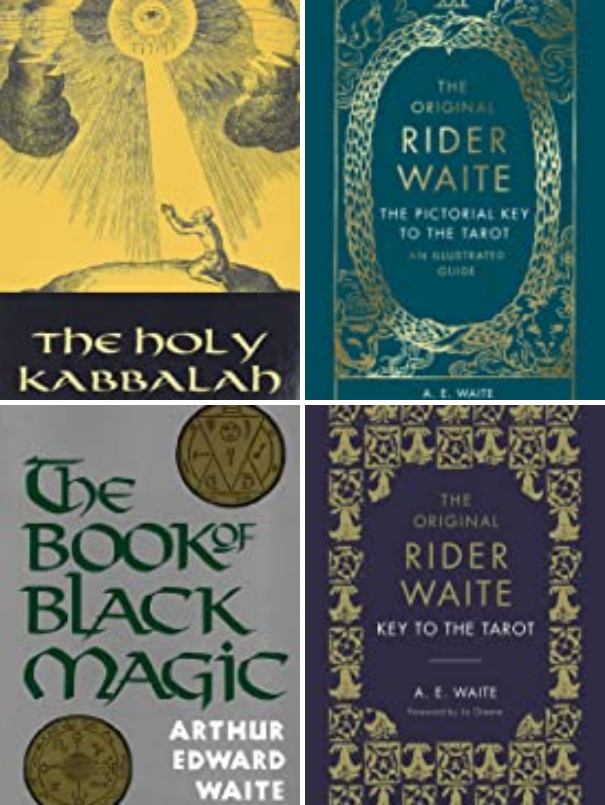

The Original Rider-Waite Tarot Set
By: A. E. Waite
This edition, distinguished by its subtle, muted color tones, is an indispensable addition to any tarot collection.
The bright, primary colors seen in the familiar 1909 version of Rider-Waite(R) Tarot deck published by U.S. Games Systems, Inc. have been returned to their original palette exemplified in the Arts and Crafts style of the early 20th century.
For example, the pale blue backgrounds seen in The Star and the Wheel of Fortune cards are presented here as minty green.
Tarot aficionados will be pleased to see that the card backs have been restored to their original design of Tudor roses and lilies in pale blue.
The Original Rider-Waite(R) Tarot Pack includes a Celtic Cross card-spread guide and an updated version of The Pictorial Key to the Tarot, written by Arthur Edward Waite.
This new edition includes a thoughtful foreword by Liz Greene, who not only places tarot in a historical context, but also situates it in a broader context.
She describes tarot as “a series of pictorial portrayals of the archetypal human life-journey.”
Recent Articles: Eight Schools of Freemasonry
 8 Schools of Freemasonry - Romantic P8 We end this series with the 'Romantic School'. Not a flowery tribute but one that explores the various 'romantic' theories as to the origins of Freemasonry, such as the Biblical aspects, the stone masons guilds, the Knights Templar. |
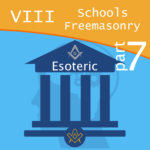 8 Schools of Freemasonry - Esoteric P7 The Esoteric School – Arthur Edward Waite viewed Freemasonry as a form of mystical teaching. He taught that enlightenment was achieved through the perfection of the self via the study of arcane knowledge and practice of occult rites. |
 8 Schools of Freemasonry - Historic P6 A dedication to fact-based historical writings as opposed to the 'traditional' or 'romantic' history, led a group of prominent Freemasons to form what would become known as the 'Authentic School' of Freemasonry. |
 8 Schools of Freemasonry - Philosophy P5 To finish with Roscoe Pound's invaluable work on the Philosophies of Freemasonry, we look at his final summing up: A Twentieth-Century Masonic Philosophy: The Relation of Masonry to Civilisation. |
 8 Schools of Freemasonry - Philosophy P4 The Philosophy of Masonry – Metaphysics and Symbolism. Following on from Part 3 of The Eight Schools of Freemasonry, we move on to Albert Pike, whose Masonic spiritual philosophy was concerned with Symbolism. |
 8 Schools of Freemasonry - Philosophy P3 The Philosophy of Masonry – Religion. Following on from Part 2 of The Eight Schools of Freemasonry, we explore the Religious School of the Rev. George Oliver. |
 8 Schools of Freemasonry - Philosophy P2 Following on from Part 1 of The Eight Schools of Freemasonry which discussed William Preston's School of Masonic Education, we explore the Philosophical School of Karl Christian Friedrich Krause. |
 8 Schools of Freemasonry - Philosophy P1 For what does Masonry exist? What is the end and purpose of the order? - Roscoe Pound's Lectures on the Philosophy of Freemasonry (1915), is probably one of the most concise and worthy explanation as to the subject. |
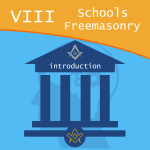 8 Schools of Freemasonry - Introduction Follow this series as examine the 'Eight Schools of Freemasonry' that have developed over the centuries since its founding in 1717. This month we outline the series and the Masonic Conception of Education. |
Recent Articles: symbolism
 Legends and Symbols in Masonic Instruction Explore the significance of Masonic legends and symbols in this insightful post. Discover how Freemasonry imparts wisdom through allegorical narratives and emblematic imagery, revealing profound moral and philosophical lessons. Unveil the deep connections between Masonic teachings and the broader quest for understanding life’s fundamental questions. |
 Discover the mystical significance of the number 33. From its mathematical marvels and artistic influence in numerology to its esteemed place in Freemasonry, delve into the history and power of this master number. Explore why 33 holds such profound meaning in various spiritual and philosophical traditions. |
 The Practice of Freemasonry - P1 Embark on a transformative journey with Freemasonry, where the exploration of your Center unlocks the Perfect Ashlar within. Through the practices of Brotherly Love, Relief, Truth, and Cardinal Virtues, discover a path of enlightenment and self-improvement. Embrace the universal creed that binds us in the pursuit of our true essence. |
 Discover the fascinating history and significance of the Warrant of Constitution within Freemasonry. Unveil the evolution of this crucial authorization, its role in legitimizing Lodges, and its lasting impact on the global brotherhood of Freemasons. Explore the intricate link it provides between tradition and modern practice. |
 Freemasonry: Unravelling the Complexity of an Influential Organization Mysterious and captivating, Freemasonry has piqued the interest of seekers and skeptics alike. With its intricate blend of politics, esotericism, science, and religion, this enigmatic organization has left an indelible mark on society. Prepare to delve into the secrets of Freemasonry and unlock its hidden depths. |
 Unlocking the Mysteries of Freemasonry: In the hallowed halls of Freemasonry, a powerful symbol lies at the heart of ancient rituals and teachings—the Volume of the Sacred Law. This sacred book not only guides the spiritual and moral journey of Freemasons but also serves as a beacon of universal wisdom and enlightenment. |
 The Ancient Liberal Arts in Freemasonry Embark on a journey of self-improvement and wisdom with Freemasonry's guiding principles. Ascend the winding stairs of moral cultivation, analytical reasoning, and philosophical understanding. Embrace arithmetic's mystical properties and geometry's universal truths. Let the harmony of the universe inspire unity and growth. Discover the profound, hidden knowledge in Freemasonry's path to enlightenment. |
 Initiation rituals around the world are filled with fascinating elements and different images. One of them is that of darkness. When societies speak of darkness, they often mean a lack of knowledge, a lack of choice, or a symbol of evil. During initiation rituals, darkness is used to represent the initiate's lack of knowledge about the world, society, and initiation in general. It can also represent the initiate's inability to make a choice or endure a situation. Whether you have participated in an initiation rite or not, the meaning of darkness remains an intriguing concept worth exploring. Initiation rituals around the world are filled with fascinating elements and different images. One of them is that of darkness. When societies speak of darkness, they often mean a lack of knowledge, a lack of choice, or a symbol of evil. During initiation rituals, darkness is used to represent the initiate's lack of knowledge about the world, society, and initiation in general. It can also represent the initiate's inability to make a choice or endure a situation. Whether you have participated in an initiation rite or not, the meaning of darkness remains an intriguing concept worth exploring. |
 Masonic Deacon rods potentially trace their origins to Greek antiquity, symbolically linked to Hermes' caduceus. As Hermes bridged gods and mortals with messages, so do Masonic Deacons within the lodge, reinforcing their roles through ancient emblems. This connection underscores a profound narrative, weaving the fabric of Masonic rites with the threads of mythological heritage, suggesting the rods are not mere tools but bearers of deeper, sacred meanings that resonate with the guardianship and communicative essence of their divine counterpart, Hermes, reflecting a timeless lineage from myth to Masonic tradition. |
 The biblical pillars erected by Solomon at the Temple's porch, hold a profound place in history. These brass behemoths are not mere decorations; they are symbols of strength, establishment, and divine guidance. Explore their fascinating construction, dimensions, and the deep meanings they carry in both biblical and Masonic contexts. |
 Unlocking the Mind's Potential: Dive deep into ground breaking research revealing how simple daily habits can supercharge cognitive abilities. Discover the untapped power within and redefine your limits. Join us on this enlightening journey and transform your world! |
 Dive deep into the symbolic importance of the trowel in Masonry, representing unity and brotherly love. From its historical roots in operative masonry to its significance in speculative masonry, this article explores the trowel's multifaceted role. Discover its connection to the sword, the story of Nehemiah, and the Society of the Trowel in Renaissance Florence. Unravel the layers of meaning behind this enduring Masonic symbol. |
 Symbolism of The Builder's Jewel Batty Langley's "The Builder’s Jewel" (1741) is a visual masterpiece of Masonic symbolism, showcasing Langley's deep understanding of Freemasonry. The frontispiece highlights key symbols like the three pillars and the legend of Hiram Abiff, emphasizing Langley's dedication to Masonic traditions and teachings. |
 Unveil the mystique of the colour blue in Masonic symbolism. A hue evoking universal friendship and benevolence, its roots span ancient cultures, infusing Freemasonry's core values. This article explores blue's profound significance, guiding Freemasons towards wisdom and spiritual enlightenment. Discover the fascinating journey of this universal symbol. |
 Discover the intriguing world of the plumb in Masonic symbolism with our in-depth analysis. Uncover its rich history, moral teachings, and significance in Freemasonry, guiding members on their path to truth, integrity, and justice. Immerse yourself in the captivating power of this symbol that shapes lives within the brotherhood. |
 Unlock the mysteries of Freemasonry with 'The Key,' a profound Masonic symbol. This seemingly simple instrument holds a deeper meaning, teaching virtues of silence and integrity. Explore its ancient roots, from Sophocles to the mysteries of Isis, and discover how it symbolizes the opening of the heart for judgment. |
 Unlock the secrets of the Freemasonry with The Blazing Star - a symbol that holds immense significance in their rituals and practices. Delve into its history, meaning and role in the different degrees of Freemasonry with expert insights from the Encyclopedia of Freemasonry by Albert Mackey. Discover the mystique of The Blazing Star today! |
 There is no symbol more significant in its meaning, more versatile in its application, or more pervasive throughout the entire Freemasonry system than the triangle. Therefore, an examination of it cannot fail to be interesting to a Masonic student. Extract from Encyclopedia of Freemasonry by Albert Mackey |
 The Hiramic Legend and the Myth of Osiris Hiram Abiff, the chief architect of Solomon’s Temple, is a figure of great importance to Craft Freemasonry, as its legend serves as the foundation of the Third Degree or that of a Master Mason. He is the central figure of an allegory that has the role of teaching the Initiate valuable alchemical lessons. Although his legend is anchored in biblical times, it may have much older roots. |
 This rite of investiture, or the placing upon the aspirant some garment, as an indication of his appropriate preparation for the ceremonies in which he was about to engage, prevailed in all the ancient initiations. Extract from The Symbolism of Freemasonry by Albert G. Mackey |
 The All-Seeing Eye of God, also known as the Eye of Providence, is a representation of the divine providence in which the eye of God watches over humanity. It frequently portrays an eye that is enclosed in a triangle and surrounded by rays of light or splendour. |
 What's in a Word, Sign or Token? Why do Freemasons use passwords, signs, and tokens? As Freemasons we know and understand the passwords, signs and tokens (including grips), which are all used a mode of recognition between members of the fraternity. |
 A Temple of Living Stones: Examining the Concept of a Chain of Union What are the origins of the Chain of Union? And how did they come about ? The answers may surprise some members as W Brother Andrew Hammer investigates, author of Observing the Craft: The Pursuit of Excellence in Masonic Labour and Observance. |
 One of the best loved stories for the festive season is ‘A Christmas Carol’. A traditional ghost story for retelling around the fire on a cold Christmas Eve, it is a timeless classic beloved by those from all walks of life. Philippa explores the masonic allegory connections… |
 The Trowel - Working Tool of the Master Mason The Trowel is the symbol of that which has power to bind men together – the cement is brotherhood and fellowship. |
 Two Perpendicular Parallel Lines The point within a circle embordered by two perpendicular parallel lines, with the Holy Bible resting on the circle, is one of the most recognizable symbols in Freemasonry. It is also one which always raises a question. How can two lines be both perpendicular and parallel? |
 "The first great duty, not only of every lodge, but of every Mason, is to see that the landmarks of the Order shall never be impaired." — Albert Mackey (1856) |
 It is common knowledge that the ancient wages of a Fellowcraft Mason consisted of corn, wine, and oil. |
 “Do not come any closer,” God said. “Take off your sandals, for the place where you are standing is holy ground.” Exodus 3:5 |
 The Secret Language of the Stone Masons We know of Masons' Marks but lesser known are the 'argots' used by the artisans - in part 2 of a series on the social history of the Operative Masons we learn how the use of secret languages added to the mystery of the Guilds. |
 The phrase appears in the Regius Poem. It is customary in contemporary English to end prayers with a hearty “Amen,” a word meaning “So be it.” It is a Latin word derived from the Hebrew word - Short Talk Bulletin - Vol. V June, 1927, No.6 |
 Egypt's 'Place of Truth' - The First Operative Stone Masons' Guild? Was ancient Egypt's 'village of the artisans' the first operative stone masons' guild? And was their use of 'identity marks' a forerunner of the Mason's Marks of the cathedral builders of the Middle Ages? Read on for some possible answers… |
 The Pieces of Architecture and the Origin of Masonic Study Discover the journey of the Apprentice – from Operative to Speculative. This journey has been carried out since the times of operative Freemasonry but today the initiate works in the construction of his inner temple. |
 The Builders' Rites - laying the foundations operatively and speculatively The cornerstone (also ‘foundation’ or ‘setting’ stone) is the first stone to be set in the construction of the foundations of a building; every other stone is set in reference to this. |
 Applying the working tools to achieve our peculiar system of morality. |
 We take an in-depth look at the 47th Proposition of the 1st Book of Euclid as part of the jewel of the Past Master. |
 The Cable Tow: Its Origins, Symbolism, & Significance for Freemasons - Unbinding the significance of the cable tow. |
 We examine at one of the most impressive moments of the initiatory ceremony, a certain rite known as Circumambulation, and ask what is its meaning and purpose ? |
 So, what is the Level? And why do we use it in Freemasonry? |
 What is the mysterious pigpen or Masonic cipher that has been used for centuries to hide secrets and rituals? |
 The Story of the Royal Arch - The Mark Degree Extracted from William Harvey's 'The Story of the Royal Arch' - Part 1 describes the Mark Degree, including the Working Tools. |
 Ashlars - Rough, Smooth - Story of a Stone How we can apply the rough and smooth Ashlars with-in a masonic context |
 A detailed look at the Chamber of Reflection: A Revitalized and Misunderstood Masonic Practice. |
 Exploring the origin and symbolism of Faith, Hope and Charity |
 The Noachite Legend and the Craft What is it to be a true Noachidae, and what is the Noachite Legend and the Craft ? |
 In Masonic rituals, Jacob’s ladder is understood as a stairway, a passage from this world to the Heavens. |
 What is the meaning of the Acacia and where did it originate ? |
 What is the connection with the Feasts of St John and Freemasonry |
 The Forget-Me-Not and the Poppy - two symbols to remind us to 'never forget' those who died during the two World Wars. |
 Biblical history surrounding the two pillars that stood at the entrance to King Solomon's Temple |
 Is there a direct link between Judaism and Freemasonry? |
 The symbolism of the beehive in Masonry and its association with omphalos stones and the sacred feminine. |
 The Wages of an Entered Apprentice |
 An explanation of the North East corner charge which explores beyond one meaning Charity - |
 A brief look at the origins of the two headed eagle, probably the most ornamental and most ostentatious feature of the Supreme Council 33rd Degree Ancient and Accepted (Scottish ) Rite |
 A Muslim is reminded of his universal duties just as a Freemason. A Masonic Interpretation of the Quran's First Two Chapters |
 The three Latin words -{Listen, Observe, Be Silent}. A good moto for the wise freemason |
masonic knowledge
to be a better citizen of the world
share the square with two brothers

click image to open email app on mobile device



